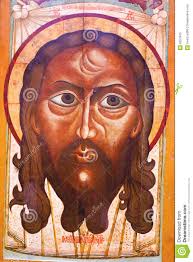A More God-like Christ Part 4
This is a continuation of my book review of Bradley Jersak’s “A More Christ-like God”:
Does God not give the Son over to become a curse for us, as it is written? Does He not become sin for us, from whom God Father and Spirit must turn His face away? Certainly the curse cannot hold on to him, but He did this so that we might never be forsaken, as He was. Does He feel forsaken by God or not really? Does He not in some way experience this hell for us? Is that not what Gehene represents in Jesus’ sayings? If not then what does it represent?
The serpent metaphor that Jersak gives is from Numbers 21 where God sends venomous snakes to bite and kill the Israelites. They must look to the bronze snake, which is a curse and indeed the Messiah becomes a curse for us and we look to Him to be saved from the curse of God. Who else initiated the curse? Even from Genesis 3 it was God who declared it on mankind and on the earth itself.
Why is the goat sacrificed and burned as a sin offering in the Torah? What is the purpose? What does it represent? Is it merely mankind’s consequence in and of itself by the laws of nature that God has set up? Even if it were set up by God, He is the source, but surely it is more than that. God prescribed those regulations as a picture not only of man hurting himself, but what is required by Him to have happen to that which is tainted by sin. That picture was continually given to the Hebrews. Jesus and the Apostles were quite familiar with it, but we are not, unfortunately. From page 238, we have Jersak giving us the classic liberalism of expiation theory, but then he quotes Romans 3 and it leaves us wondering, who left the sins unpunished, unpunished by who? Ourselves? No, He left them unpunished. He was crucified outside the city according to Hebrews, which the readers would have understood as a reference to the scapegoat of Leviticus. The sins of the people were laid on the scapegoat and it was sent out of the city to die for the people’s sin. This was the verdict of God. Why was the lamb killed at the Passover and its blood applied to the doorposts? So that the wrath of God would pass over their house and not come on them. Every Hebrew knows that. And at every Passover the destroying angel is understood as an agent of God’s wrath. It’s certainly not an agent of satan nor of mankind, but of God and His wrath comes on all those who refuse to obey Him through lack of faith. Those are the metaphors of Scripture that Jesus continually refers back to, even in the most important supper before His crucifixion.
I have no issue with his metaphor of ransom paid to death itself, but I also have no problem acknowledging at the very same time that we owed a debt to God. The very prayer the Lord taught us teaches us that we owed a debt to God, which He forgave and we ought to forgive the debt owed to us by others. Jesus frequently used this metaphor in his parables, Paul certainly picks it up and so should we. The idea that is presented by Jersak is that if God forgave us, why would He need further payment? In other words, if a bank forgives a debt, then it is forgiven. They don’t then demand payment. But the faulty reasoning there is two-fold at least: 1- If the bank forgives the debt, then they themselves are paying the restitution for the debtor. 2- Restitution is also a very Christian idea and part of the process of reconciliation. That was the importance of the guilt offering analogy in both Leviticus and the prophecy of the Messiah’s sacrifice in Isaiah 53, “He makes his life a guilt offering.”
If it was only death that Jesus faced in the Garden of Gethsemane, even if death by crucifixion, then why did He sweat drops of blood and ask that the cup be taken from Him? Many of the saints and lesser men than Christ have faced such death with calm and courage. But if it was indeed the curse of sin that He would take on Himself and the very wrath of God towards that sin which turns away the Face, then his stress and request become very appropriate.
(Final part 5 next time…)
